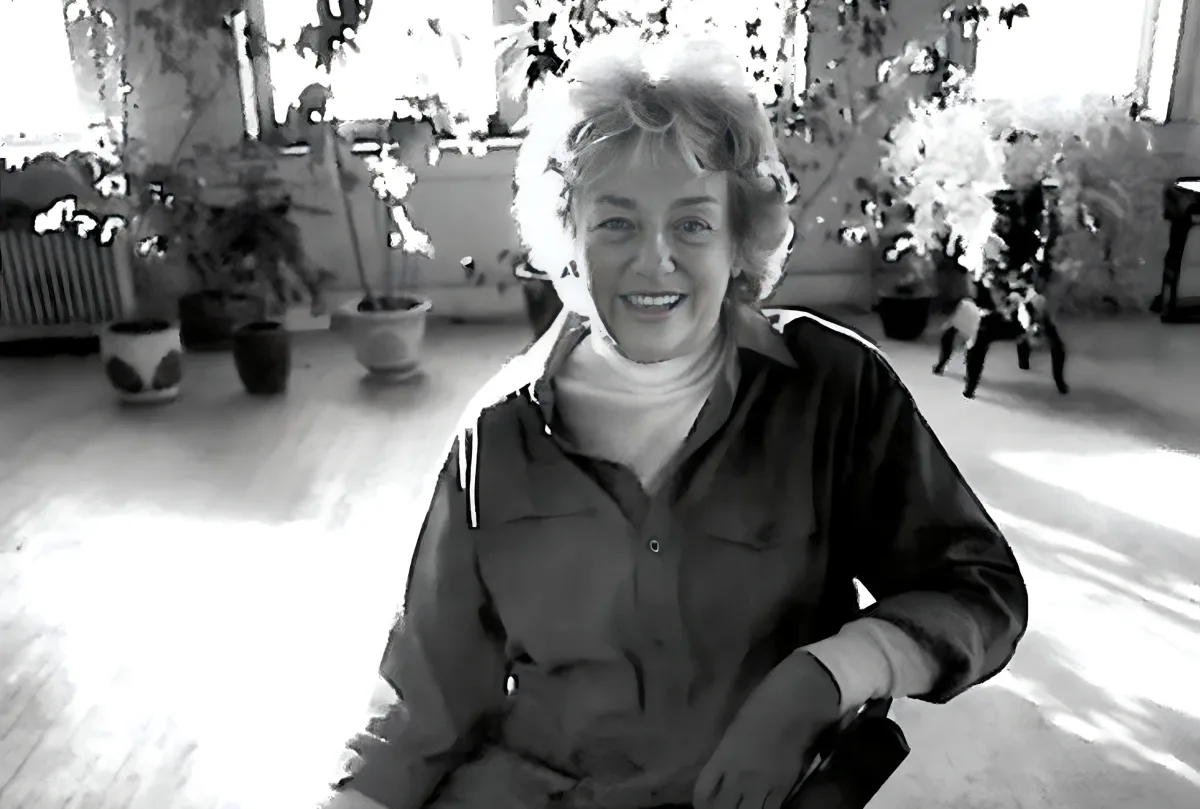In the 1950s, Grace Hartigan was the most celebrated woman painter in America, according to Life magazine. She modestly concurred: “I was a household name.” Her career traced a brilliant arc from international fame to a locally rooted esteem, and by the time of her death, aged 86, she was effectively a household name only in Baltimore, where she was revered as a teacher.
Hartigan’s misfortunes were, first, to make her reputation as an abstract expressionist, a movement she felt uncomfortable with; and then to be acclaimed as a pop artist, a movement she despised. Even after Hartigan’s death, the director of the fine art department of Maryland Institute of Fine Art was improbably claiming Hartigan and Larry Rivers as the inventors of pop. The truth, as Hartigan told it, was that she felt uncomfortable as an abstract expressionist working in the shadow of Jackson Pollock, though no critic ever guessed this from her assured ease of technique and beautiful sense of colour.
Hartigan was the oldest of four siblings born in Newark, New Jersey. The family was poor and Hartigan skipped college to marry early. She and her husband, Bob Jachens, moved in the early 1940s to California, where he encouraged her to take up painting. In the mid-1940s she left Jachens, placed her son with her in-laws and moved to New York, where she immersed herself in the circle of painters such as Pollock and Willem de Kooning, as well as Frank O’Hara and John Ashbery, the poets who plugged in to the freedom of abstract expressionism to power their verse. O’Hara, who was openly gay, became a close friend and influence, with his jazzy collages of verse impressions of New York.
It was a wild time of boozing and sex and boasting. “I didn’t have talent,” she remarked later, “I just had genius.” She was patronised by the art historian Meyer Schapiro and the prime mover on the New York art critical scene, Clement Greenberg.
Alfred Barr, the legendary first director of the New York Museum of Modern Art, bought her painting Persian Jacket for the collection and, with the Moma curator Dorothy Miller, included her in two shows, 12 Americans (1954) and The New American Painting. The latter went round Europe and hit the London art scene like a tidal wave in 1956, transforming postwar British art practice. Later it became mixed up in accusations that it was a tool of American propaganda, and that Barr and Miller were in cahoots with the CIA as part of the insidious funding campaign that also kept the Stephen Spender-edited Encounter magazine afloat. This seems to have been more or less true, though pretty well irrelevant to the artistic achievement except in the revisionist shadow world of cultural social history.
Hartigan herself was uneasy about her own shadow world, as she saw it: she understood the formal qualities of abstract expressionist painting without feeling any motivation from within. Feminist cultural theory holds that women, including Pollock’s highly talented wife Lee Krasner, felt excluded by the maleness of the movement. At one point Hartigan decided to sign her paintings George (in homage to the female Georges, Sand and Eliot).
Meanwhile, she contracted marriages two and three, which were short and disastrous. In 1960 came marriage number four when a Johns Hopkins university epidemiologist called Winston Price, who was also an art collector, dropped in at her Manhattan studio and bore her off to Baltimore.
Hartigan, meanwhile, had begun to introduce figurative imagery into her work, after the manner of de Kooning, but in the febrile New York art world it became suddenly irrelevant when Andy Warhol, Roy Lichtenstein and the other pop artists swept all before them – added to which Baltimore, to the New York art world, was a backwater. Hartigan had a brief unlikely renaissance as a pop artist, and though she denounced it as a style, she added that she would sooner be acclaimed a pioneer of a movement that she hated than in the second generation borrowing from a movement that she loved.
In 1964 she began teaching at Maryland Institute. Her students loved her. Her marriage to Price proved fulfilling, but, in 1969, he injected himself with an experimental vaccine which may have succeeded in warding off encephalitis, as intended, but also gave him spinal meningitis. As he declined, she took a heavy overdose of sleeping pills, but survived. He died miserably in 1981.
After her fourth husband’s death Hartigan acknowledged that she was an alcoholic, managed to stop drinking, and devoted herself to a life of artistic creation. Her son, Jeffrey Jachens, died in 2006, but she is survived by three grandchildren and a brother and sister.
Grace Hartigan, artist, born March 28 1922; died November 15 2008
